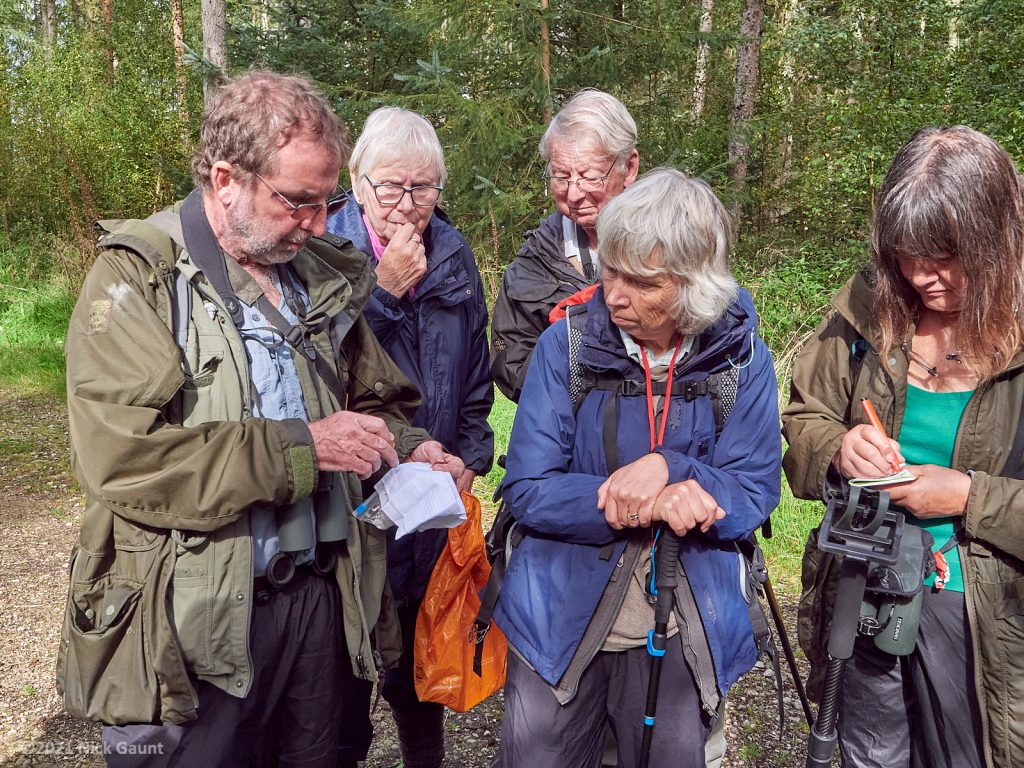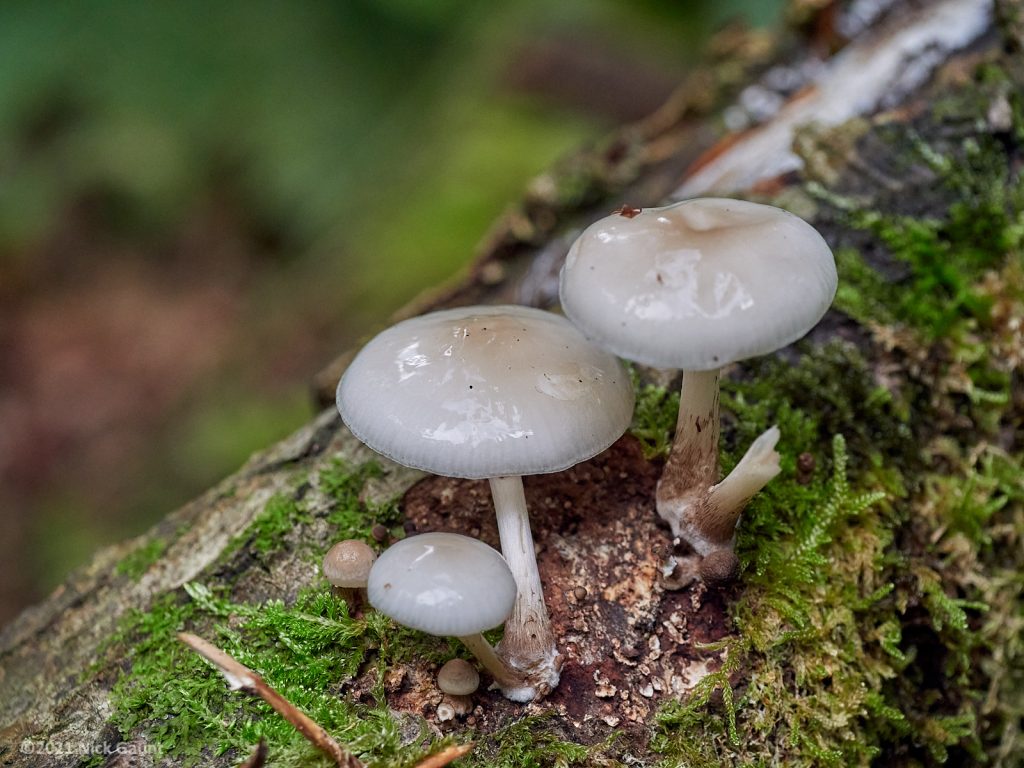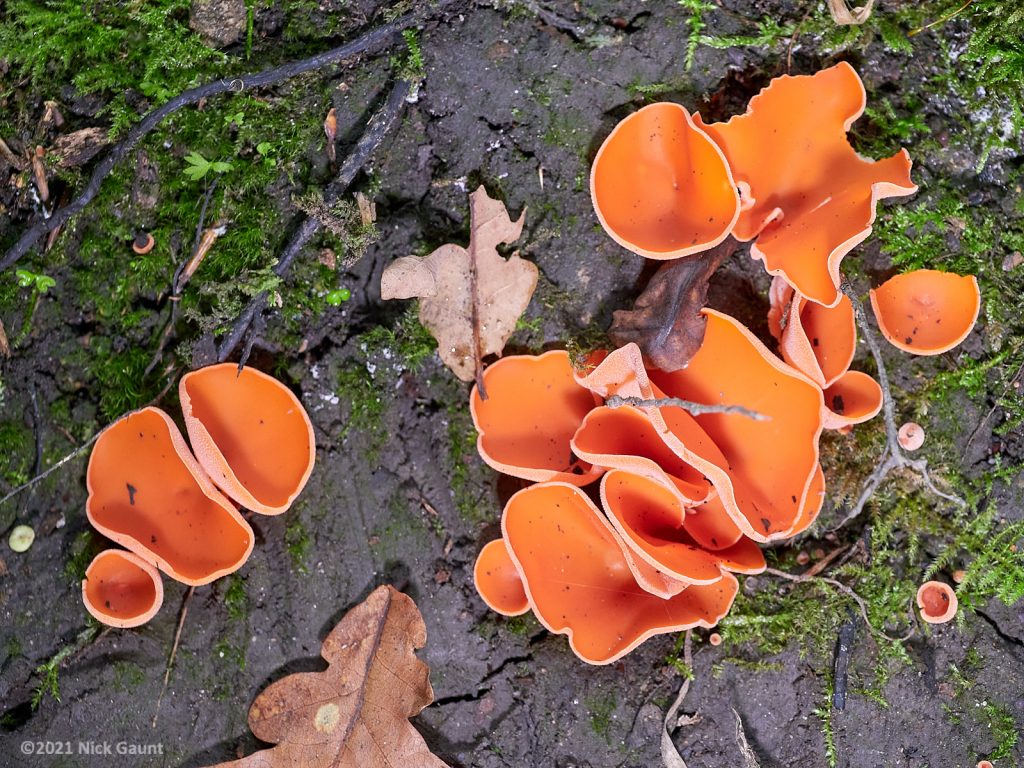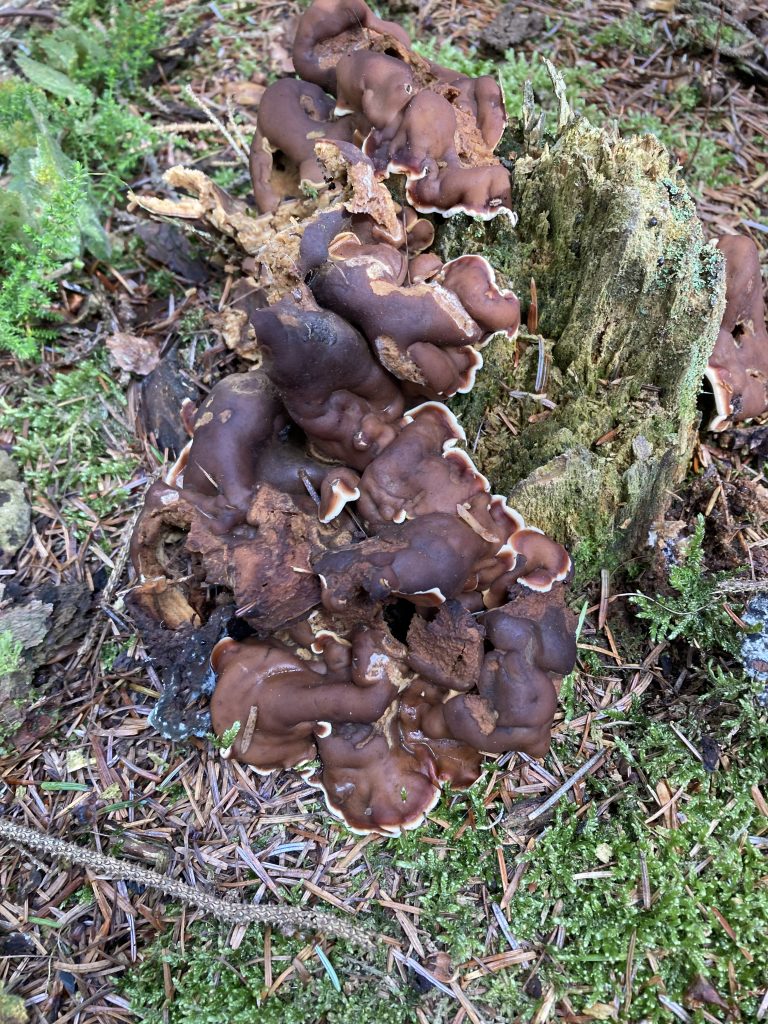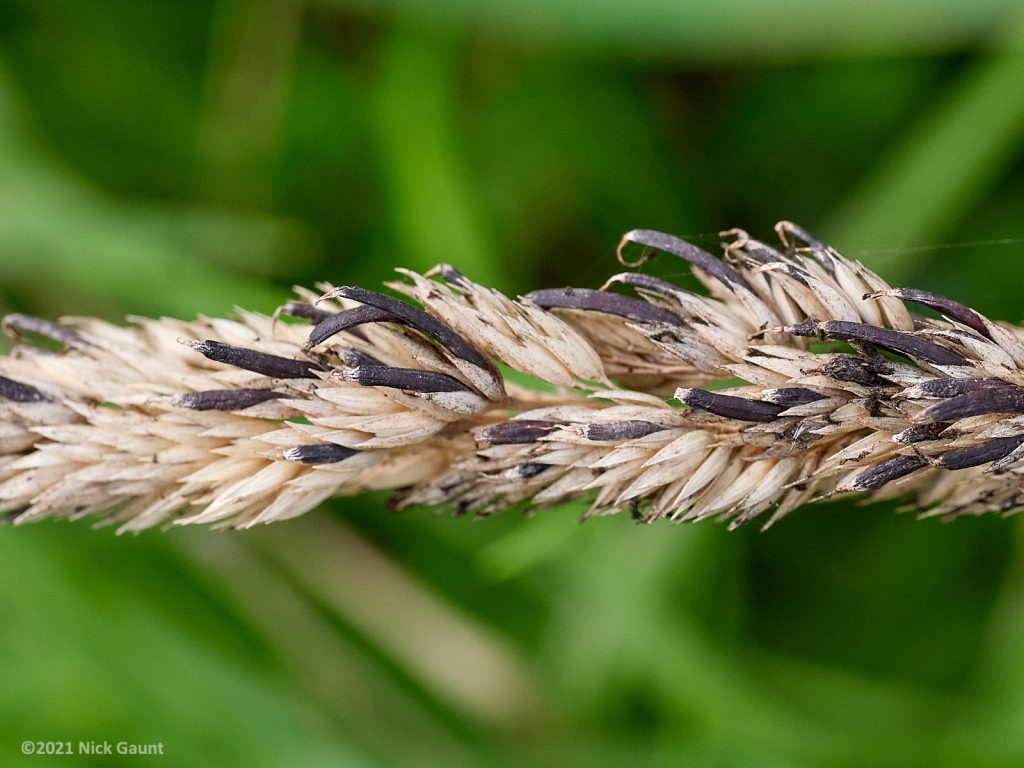12 would-be mycologists assembled for the now-traditional fungus field trip with Andy Woodall. Welcome to new members Pamela Crawford and Nabil Abbas!
Swinsty Woods are mixed coniferous, with plenty of Larch, Birch and some Beech – all good for fungi. The reasonably warm wet weeks preceding our visit gave us cause for optimism, and we were not disappointed – a total of 60 species was found, a joint effort as the enthusiasts scrambled among the grass, brambles and decaying logs and brought their finds to Andy.
Andy is not only an omniscient mycologist, he is also a natural teacher, and entertained and instructed us with fascinating information about even the most dull-looking specimens. He is a veritable walking laboratory, with pockets full of chemicals and tools, and even a magician’s handkerchief to collect specific stains from certain fungi! Thus we learnt many interesting facts, tips on identification, explanations of scientific names and had discussions on the role of fungi in both ecology and human culture.
Fungi are totally unlike plants. Among those we found, were specimens coloured purple, white, every shade of brown, fawn, yellow, black, scarlet and orange, everything in fact except for green! This of course is because of their mode of nutrition.
They have been mysterious for many years but now, since matching of DNA has been possible, they are being regrouped and renamed, old groups often split or lumped together. This makes it very difficult to keep up with the Latin names, and the English names as well as being more stable are memorable and often usefully descriptive – the Deceiver, the Poisoner, the Sickener, Porcelain, Orange Peel, Rollrim, Mazegill…
What else did we learn? That to identify fungi you need all your senses: obviously sight, touch for texture, smell, – from radishes to bedbugs – taste, with caution; but we did not know you also use your sense of hearing! Apparently the Snapping Bonnet, if held close to the ear, produces a sharp snapping sound which is diagnostic. We learnt that the Russulas usually have a colourful cap with white gills (“brittle gills”) and skin which peels off the cap, and we found ones called Ochre, Purple, Geranium, Bloody, Yellow Swamp, Oilslick, Blackening and Birch.
We also discovered that Inocybe and Clitocybe should actually be pronounced Inócybe and Clitócybe, following the usual rule for Latin to put the stress on the third syllable from the end. And the Razorstrop fungus or Birch Polypore, apart from stropping razors, can also be peeled and used as a wound plaster – demonstrated by Andy though not, fortunately, on an actual wound. It was also used by early naturalists instead of corkboard for pinning specimens! We noted how the brackets were perfectly aligned to the horizontal, since the minutely narrow pores must be vertical for the spores to escape. And we learned that a wet tissue stuck to a half-inflated balloon which is then blown up, simulates the formation of the remnants of veil left on an Agaric cap when it expands, giving the iconic ‘spots’ on the familiar red toadstool and other speckled members of the Amanita family.
A full list of all the fungi found is attached below, with scientific names. But some of the highlights deserve a particular mention:
The Turkey Tail, though well known, repays close observation – it has a most beautiful velvety surface with stripes in elegant shades of grey, and underneath, the white pores are incredibly tiny. We did not know it can be made into an infusion with some doubtful health-giving benefit…. Puffballs are always fascinating and the Dusky Puffball we found, as well as having an infinite supply of puffing spores, has tiny spines which converge like wigwam poles. Then there was the very photogenic Amethyst Deceiver, velvety and almost glowing purple; Porcelain fungus, perfectly shaped, was shining white and so so slimy, Orange Peel, intensely orange with a curious matt finish; Larch Bolete with a shiny chestnut skin; and a strange-looking mound resembling a large pile of animal droppings but which on closer inspection was seen to be made of leathery fungal “shells”; apparently this was an Ascomycete, a separate group of fungi who “shoot” their spores from the top. Small Stag’s Horn was like a little bright-yellow fringe growing out of its log. Some particularly good specimens of Ergot were found in a reed flower head, and you can never fail to be fascinated by the beautiful pore pattern of the Mazegills.
Such variety to be found in a single day’s exploration of a relatively small patch of wood! Many thanks to Andy for a full and fascinating day, a fitting end to our summer of outdoor field trips.
Muff Upsall
Andy Woodall leading the fungus foray (Nick Gaunt) Amethyst Deceiver (Laccaria amethystina), Nick Gaunt Porcelain Fungus (Mucidula mucida), Nick Gaunt Orange Peel Fungus (Aleuria aurantia), Nick Gaunt Pine Firefungus (Rhizina undulata), Muff Upsall Small Stagshorn (Calocera cornea), Nick Gaunt Ergot (Claviceps purpurea), Nick Gaunt

